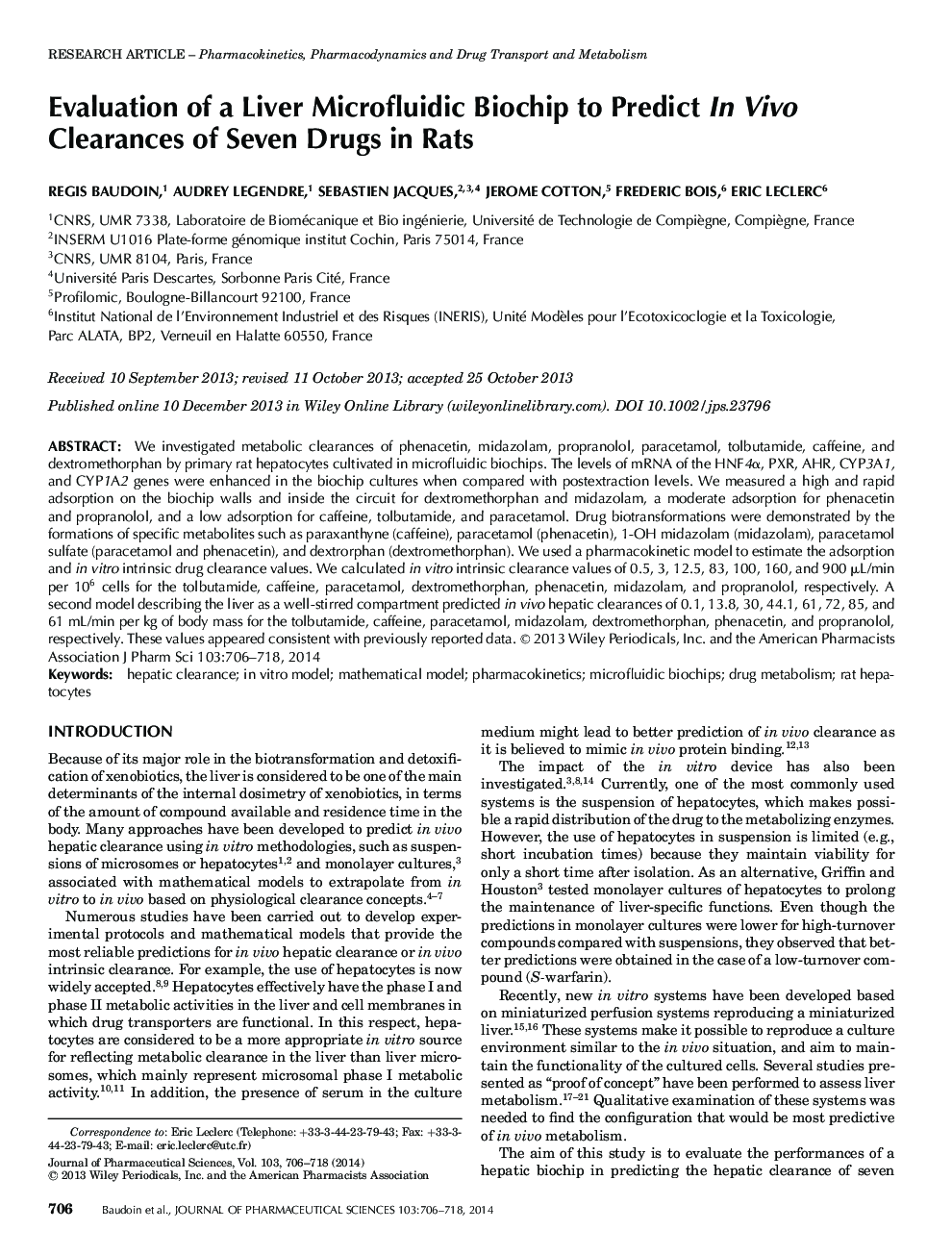| Article ID | Journal | Published Year | Pages | File Type |
|---|---|---|---|---|
| 10162618 | Journal of Pharmaceutical Sciences | 2014 | 13 Pages |
Abstract
We investigated metabolic clearances of phenacetin, midazolam, propranolol, paracetamol, tolbutamide, caffeine, and dextromethorphan by primary rat hepatocytes cultivated in microfluidic biochips. The levels of mRNA of the HNF4α, PXR, AHR, CYP3A1, and CYP1A2 genes were enhanced in the biochip cultures when compared with postextraction levels. We measured a high and rapid adsorption on the biochip walls and inside the circuit for dextromethorphan and midazolam, a moderate adsorption for phenacetin and propranolol, and a low adsorption for caffeine, tolbutamide, and paracetamol. Drug biotransformations were demonstrated by the formations of specific metabolites such as paraxanthyne (caffeine), paracetamol (phenacetin), 1-OH midazolam (midazolam), paracetamol sulfate (paracetamol and phenacetin), and dextrorphan (dextromethorphan). We used a pharmacokinetic model to estimate the adsorption and in vitro intrinsic drug clearance values. We calculated in vitro intrinsic clearance values of 0.5, 3, 12.5, 83, 100, 160, and 900 μL/min per 106 cells for the tolbutamide, caffeine, paracetamol, dextromethorphan, phenacetin, midazolam, and propranolol, respectively. A second model describing the liver as a well-stirred compartment predicted in vivo hepatic clearances of 0.1, 13.8, 30, 44.1, 61, 72, 85, and 61 mL/min per kg of body mass for the tolbutamide, caffeine, paracetamol, midazolam, dextromethorphan, phenacetin, and propranolol, respectively. These values appeared consistent with previously reported data. © 2013 Wiley Periodicals, Inc. and the American Pharmacists Association J Pharm Sci 103:706-718, 2014
Keywords
Related Topics
Health Sciences
Pharmacology, Toxicology and Pharmaceutical Science
Drug Discovery
Authors
Regis Baudoin, Audrey Legendre, Sebastien Jacques, Jerome Cotton, Frederic Bois, Eric Leclerc,
